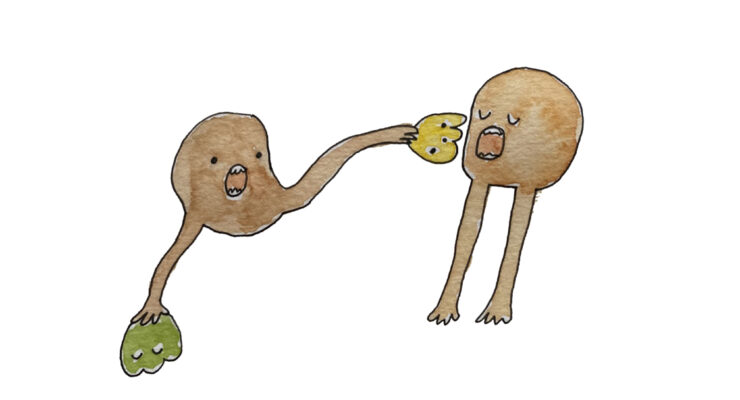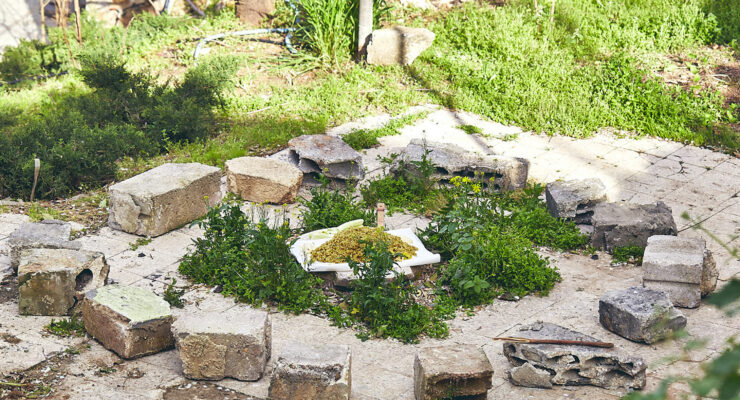“It was design that brought me to food.”
Xijing Xu is a Berlin-based designer from China. She helped develop “ChiTofu”, an Interdisciplinary Experimental Food Design Program in Hangzhou, China before starting her Masters at the Universität der Künste in Berlin. She graduated with a poetic and visionary project called "Wanderer" which combines textiles and milk fermentation. We talked to her about all things food, design and education.
How did you come to food and design and what intrigues you about it?
Halfway through my bachelor studies we had a 3-week workshop in which we talked about new business/service models through the lens of food. Before the workshop I had been feeling quite bored by the classical pedagogies of industrial design, where we only had short-term projects aimed at training a few basic skills without going deeper into thematic discussions.
At this workshop though, it was the first time I was able to survey a design task in a more dynamic landscape with a more holistic view. With inputs from service design, I started to consider the user behaviour and user-experience more. Food turned out to be an excellent material to start discussions and trigger reinterpretations. As a designer, you cannot approach food the same way you would model a headphone, because there is life behind it. You need to think about the elements that you cannot control.
So for me, the first motivation which led me to food and design was somewhat private. It reflected my rebellion against the conventional way of making, producing and consuming at my school, and also evoked a rethinking of my self-orientation within the traditional design context.
It was design that brought me to food, and the discussions about food that helped me to expand my views on design.
"Tofu Drink" by Xijing Xu

"Wanderer" textile by Xijing Xu

What was your favourite food design project to work on?
After I started paying the field of food design more attention, I found a lot of exciting projects. My favourite one reminded me more of an art project: “Taken at the F(l)ood” by Marc Bretillot. Marc’s team went to Berck, a beach on the north coast of France. They set up a temporary installation using materials found on location to organise a little wild meal. Following the course of a tidal cycle, the whole installation was gradually flooded by the sea. The wood and the rest of the food were swept away by the waves, until only the sounds from seagulls and wind were left. This performance reflects a metaphorical expression of the relationship between human and nature. The poetry of this work touched me so much, it made me shift my focus to behaviour and performance with food.
Before my graduation project, I assisted in the setting up of a food-design program run by my tutor Fang Hu in Hangzhou, China. Beginning with research about traditional Chinese ingredients (soy products) and digging out the various crafts and flavours behind them, we cooperated with a pastry chef and a small food factory to develop new food experiences.
Thanks to this experience I had a chance to look at the way the production of one ingredient can vary at different scales (mass production/middle manufacture/small hand-crafting atelier/home-made). This experience led me directly to my bachelor thesis: my friends and I set up an installation for making a cup of tofu drink which reinterpreted traditional crafting tools but also served as a showcase to present the process of making the tofu drink.
When I started my master’s at UdK in Berlin, I tried to continue practicing this methodology. I began by doing research about food ingredients and reviewed their manufacturing processes. This let me stay inspired by the beauty of craft and find inspirational elements which could be embedded into the eating experience. All of this led to my “Wanderer” project in which I applied sour milk onto textiles, which become reusable for a new production cycle. The milk is applied in a way that visualises the bacteria involved in the fermentation process. The squares function as a unit of measurement for the amount of culture stored in the fabric, which can easily be cut off and used as a starter culture for new sour milk.
By actualising this project, I realised that to work with fermentation, I needed to face all the natural uncertainties that it comes with. Differing from a “step by step” making process, the beauty of fermentation comes exactly from the irregularity and surprises, the sharing and exchange beyond a community. (I also tried to steal some poetry from Marc Bretillot in representing the sharing element in my work.) The most interesting thing to think about is, instead of being sold as a regular product, I can cut down pieces of it and send them to friends or strangers, to let it gradually disappear in this repetitive giving-away process.
Do you feel your education brought you to food or do you wish your education would have had a food focus?
For the first question, yes for sure, but not directly through a systematic and academic way. I quite like the project-oriented model that initially brought me to the topic of food. The subsequent discussion about food reflected on my view about design. In a way, they kind of fed into each other.
This kind of organic development of thoughts and ideas is why I enjoy design as a profession, and it’s also why I don’t know about the second question. Maybe a food and design course could be suitable for people who already have some awareness or past experiences in this field. It would help them to delve deeper into the topic. I don’t think it would help to create another rigid curriculum with a fixed catalog and textbooks.
How you experience the food & design scene where you are and how it is developing (or not)?
First, I’ll talk about the differences I feel in Hangzhou versus Berlin:
Maybe it’s my prejudice but from my general feeling, as Chinese, we are so proud of our culinary arts, our criteria in criticising foods are centrally focused on the taste of the food itself. I can imagine that people would get extremely offended if anybody dares to teach us how to deal with food when the flavour isn’t convincing.
In contrast to that, the feeling I get from Berlin is that instead of adding flavour, people are more likely to add labels to food: organic, exotic, vegan, sustainable, zero-waste… but for sure yes these allow the topic about food being talked in more dimensions. Especially in Berlin you can feel and see that many people are engaging in this field of food in a diverse way: Vertical agriculture, events, recycling wasted food… But how can design get involved? With this question I am trying to looking for an interface to integrate myself into the food & design scene.
—
Read more about Xijing on her website: www.xijingxu.com










